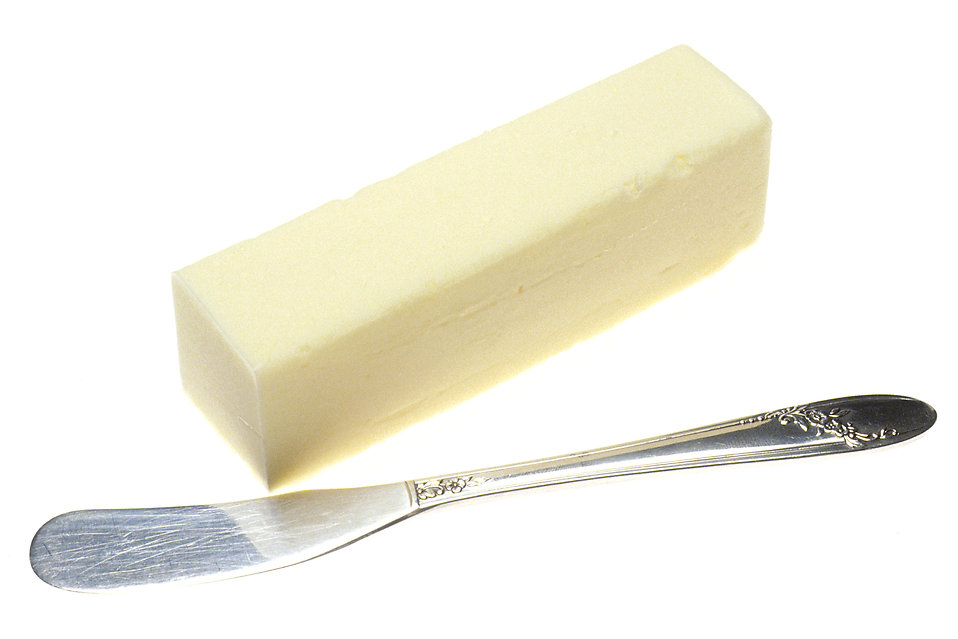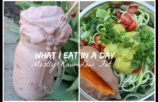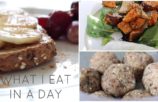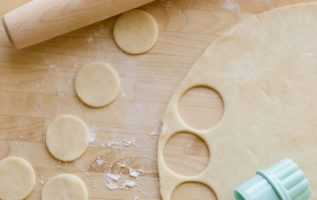
Julia Child said, “With enough butter, anything is good.” I am a strong supporter of this statement. Butter is, without a doubt, my favorite fat to use when baking, because it offers the best flavor. Because it is a solid fat, it also helps create tender and flaky desserts.
TYPES OF BUTTER
Raw Cream Butter: This butter is not commonly found in stores, since many states outlaw the sale of unpasteurized raw milk. Even organic milks are pasteurized. This would likely only be available if home-produced straight from the cow.
Cultured Cream Butter: Cultured cream butter is the oldest kind of butter and is still the most commonly used butter in Europe. It has a stronger flavor than the sweet cream butter we typically buy in the United States. Before refrigeration, cream would ferment a few days before being churned into butter. Nowadays, chilled cream is fermented with cream-culture bacteria before churning, or the bacterial cultures are added to already churned sweet cream butter. Alternatively, lactic acid and flavoring may be added to sweet cream butter, but the flavor is artificial.
Sweet Cream Butter: This if the most common type of butter purchased in North America and Britain. Sweet cream butter is made with fresh, pasteurized cream. This was made possible with the advent of ice and refrigeration. In the United States, sweet cream butter has 80% butterfat and no more than 16% water. It has a blander taste than cultured cream butter. Sweet cream butter comes in unsalted and salted varieties; salted butter contains 1-2% of added salt, about 1-2 teaspoons per pound.
European-Style Butter: Overlapping with cultured cream butter, European-style butter has a higher fat content, between 82-86% butterfat. The lower water content in this butter makes it ideal for flaky pastries.
MEASURING BUTTER
In the United States, butter comes in ½ cup sticks, with table-spoon markings on the wrapping. The easiest way to measure this kind of butter is to cut through the paper where the guidelines are. If you have butter that comes in another form (in rolls, for example) or you’ve thrown out the wrapping, measure your butter by weight.
1 stick = 113 grams = 4 ounces
1 cup = 226 grams = 8 ounces
1 tablespoon = 14 grams = ½ ounce
HOW BUTTER IS MADE
Butter begins as cream, which is essentially water with tiny globules of fat. These globules are surrounded by a thin lipoprotein membrane. When the cream is agitated or churned, these membranes are damaged, allowing the fat within to be released. The molecules in the fat stick together and stack up, forming fat crystals. As the crystals come together, they separate from the liquid, leaving behind buttermilk.
The buttermilk is drained off, and the butter chunks are rinsed with cold water to remove any buttermilk residue. Then the butter chunks are kneaded or mixed again so that they come together and any leftover excess liquids are drained off. The completed butter is then shaped and packaged.
WHAT’S IN BUTTER?
Butter in its final state is comprised of various fat crystals, water droplets, fat that was released from the original globules, and a small amount of intact globules. It is 99% fat and 1% protein.
STORING & USING BUTTER
Butter should be kept refrigerated in the coldest part of your refrigerator, around 32-35°F. Keep it wrapped airtight and away from other foods, as it easily absorbs odors. Butter can (and should) be frozen until ready to be used, for up to 6 months. Thaw overnight in the refrigerator before using.
To check for freshness, cut into your butter. It should be uniform in color. If it is darker on the outside, it has oxidized and will taste rancid.
Depending on what you are making, your butter will either need to be cold or at room temperature. When flakiness is desired, as in pie crusts, biscuits, and scones, use very cold butter. When making these baked goods, I like to chop my refrigerated butter into cubes and then place them in the freezer for 10-15 minutes before using them so they are extra cold. Cold butter is desirable because when the butter chunks are intact in the dough, they melt and leave air pockets in the dough, creating flakes.
When making cookies and cakes, however, butter should be brought to room temperature (65-70°F). This allows for better creaming because the sugar will cut tiny air bubbles into the butter. Any cooler and the sugar will have a hard time cutting into the hard fat; softer and the butter won’t be able to hold the air bubbles.
Need to bring butter to room temperature fast? Cut it into cubes and let them sit out on the counter for 10-15 minutes. Alternatively, nuke cold sticks of butter in 5-second spurts, being careful not to melt it. If your butter is frozen, grate it like cheese. The resulting pieces will be so small they will come to room temperature very quickly.
Source: siftandwhisk.com (defunct blog)



























